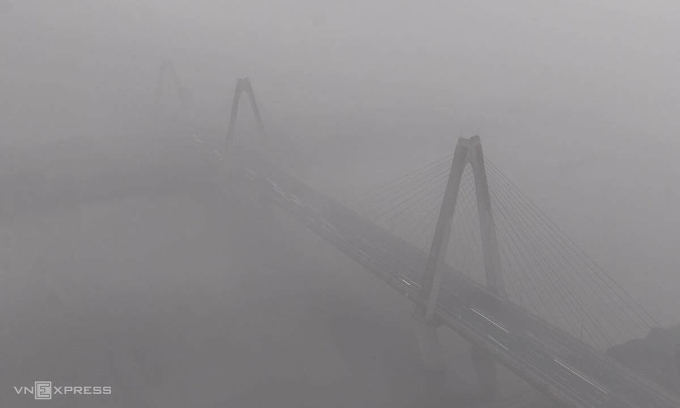Hanoi’s air quality ranked second-worst globally by IQAir on Friday
Smog hangs over Nhat Tan Bridge in Hanoi, Nov. 28, 2023. Photo by Read/Ngoc Thanh
Hanoi recorded the second most polluted air quality globally on Friday, with an Air Quality Index (AQI) of 210, following India’s Delhi with an AQI of 470, according to Switzerland-based monitoring platform IQAir.
Hanoi’s Department of Natural Resources and the Environment at 8 a.m. registered AQI readings between “poor” and “hazardous” (100-200) across all monitoring stations.
The Minh Khai Street station in Bac Tu Liem District consistently reported levels above 200 since 1 a.m.
Other stations, such as those in Cau Giay District, recorded AQI levels near 159, while readings at the U.S. Embassy in Hai Ba Trung District reached 188. The U.N. International School in Tay Ho District reported a reading at 230.
According to AirVisual, the AQI ranges from 0 to 500, though air quality can be indexed beyond 500 when there are higher levels of hazardous air pollution. Good air quality ranges from 0 to 50.
The index staying between 201 and 300 is classified as “very unhealthy,” which means the general public will be noticeably affected and sensitive groups should restrict outdoor activities.
When it ranges from 101 to 150, it is categorized as “unhealthy for sensitive groups” which means general public and sensitive individuals in particular are at risk to experience irritation and respiratory problems.
The environment ministry has forecasted a worsening trend in air pollution across large cities, especially in Hanoi, from September to next year’s March.
Contributing factors include heavy traffic, construction, industrial emissions and agricultural activities that fall short of environmental standards. Combined with weather conditions, these pollutants, especially fine particulate matter (PM2.5), are expected to accumulate rather than dissipate.
Environmental authorities have urged localities to enhance monitoring efforts and publicly share air quality data, offering health protection guidelines.
Local administrations have been advised to inspect emissions sources, such as waste incinerators, to mitigate the escalating pollution levels.


Comments are closed.